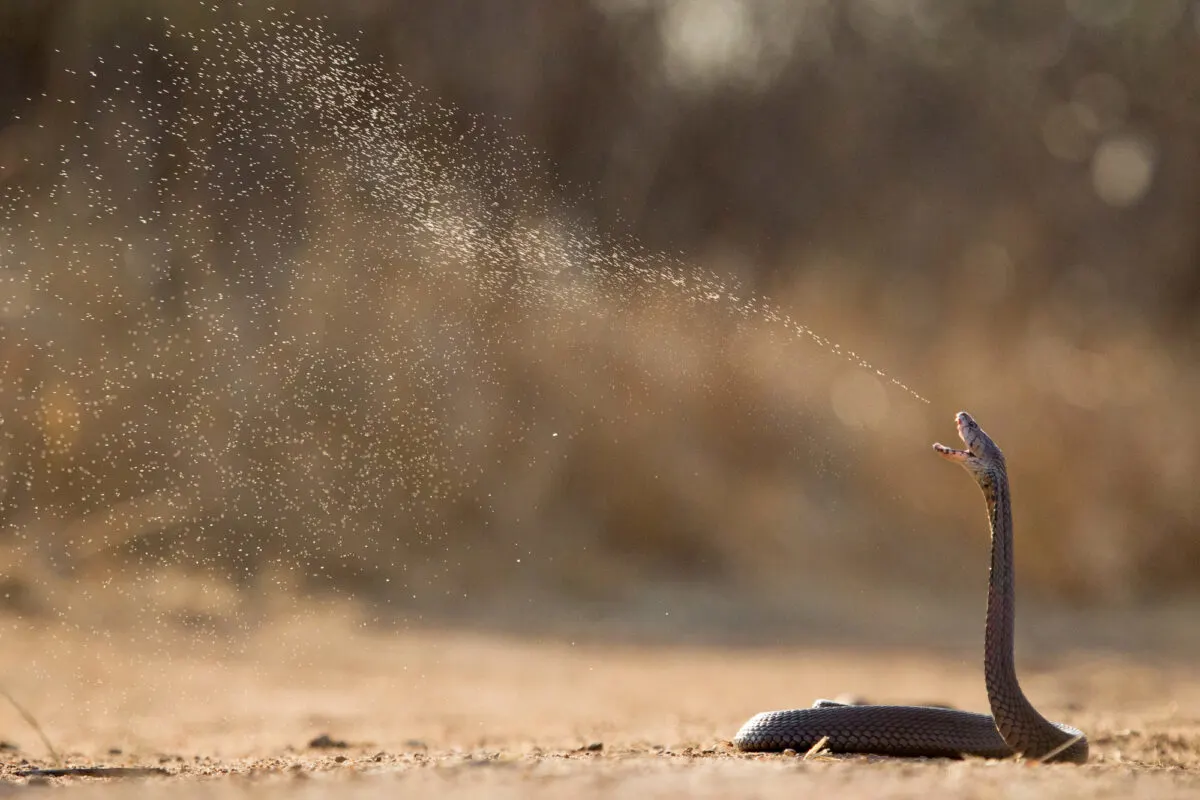The world of snakes is a realm teeming with diversity and shrouded in mystique. From the deadliest venomous snakes to the gentlest constrictors, these creatures captivate our hearts and minds.
The Comparison
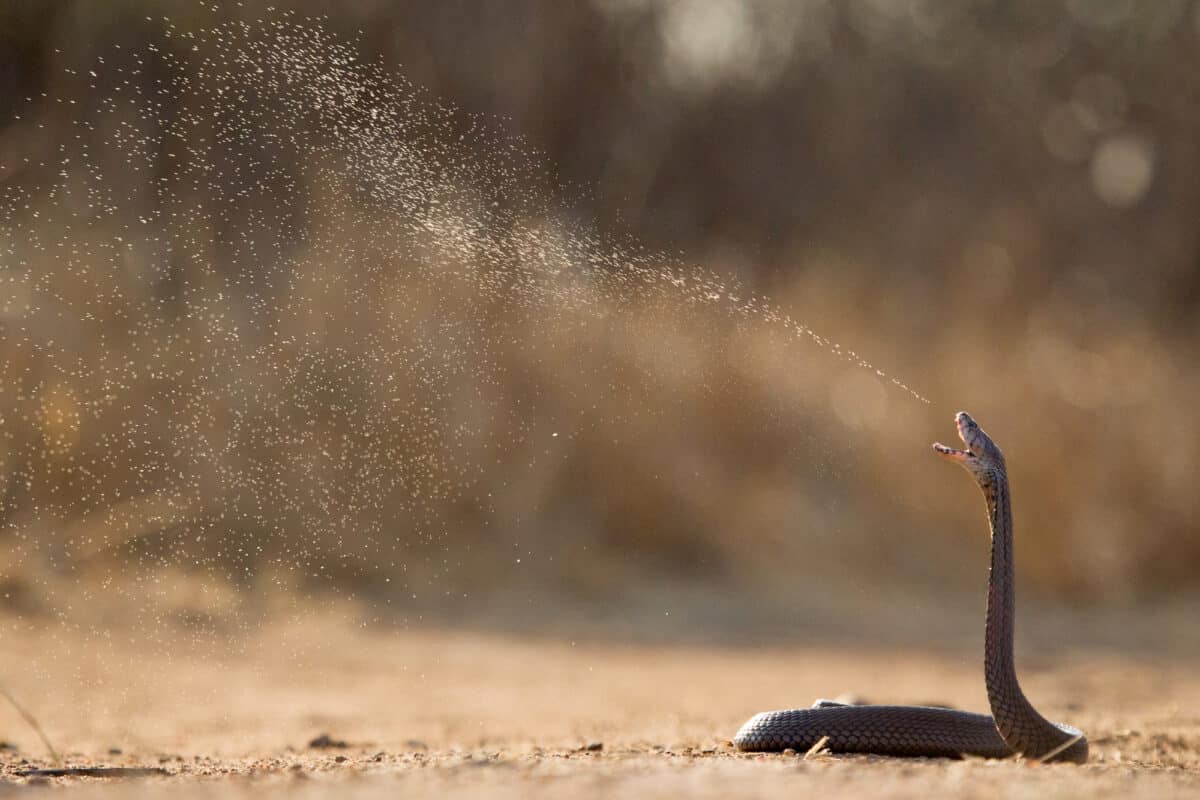
In the hidden corners of the natural world, a mesmerizing rivalry plays out between two captivating serpents—the Milk Snake and the Spitting Cobra. These enigmatic creatures, each with unique attributes and survival strategies, have captured the fascination of wildlife enthusiasts and herpetologists alike.
From the mystical allure of the Milk Snake’s ever-changing hues to the spine-chilling spectacle of the Spitting Cobras’ venomous precision, these slithering wonders command attention and admiration. Embark on a journey into the heart of their mysterious realm, where danger and beauty collide, and the art of survival is painted with vivid colors and deadly precision.
Slither to any section below!
Comparison Table
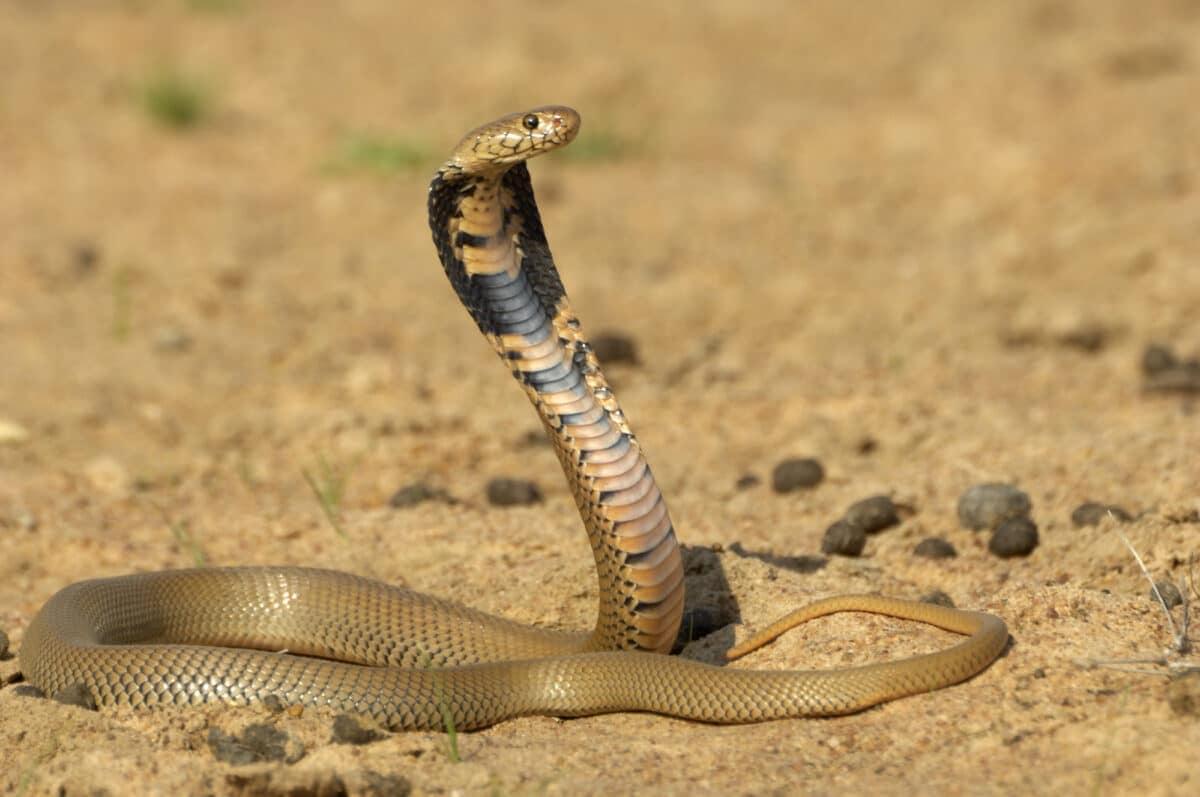
| Aspects | Milk Snake | Spitting Cobra |
| Geographical location | North and Central America | Asia & Africa |
| Length | Up to 6 feet | Up to 7 feet |
| Behavior | Docile and calm | Aggressive and will attack if provoked |
| Venomous | Nonvenomous | Venomous |
| Coloration | Red, black, and yellow | Mottled brown/black |
| Natural Habitat | Woodlands, fields, farms | Swamps, forests, grasslands |
Getting To Know The Milk Snake
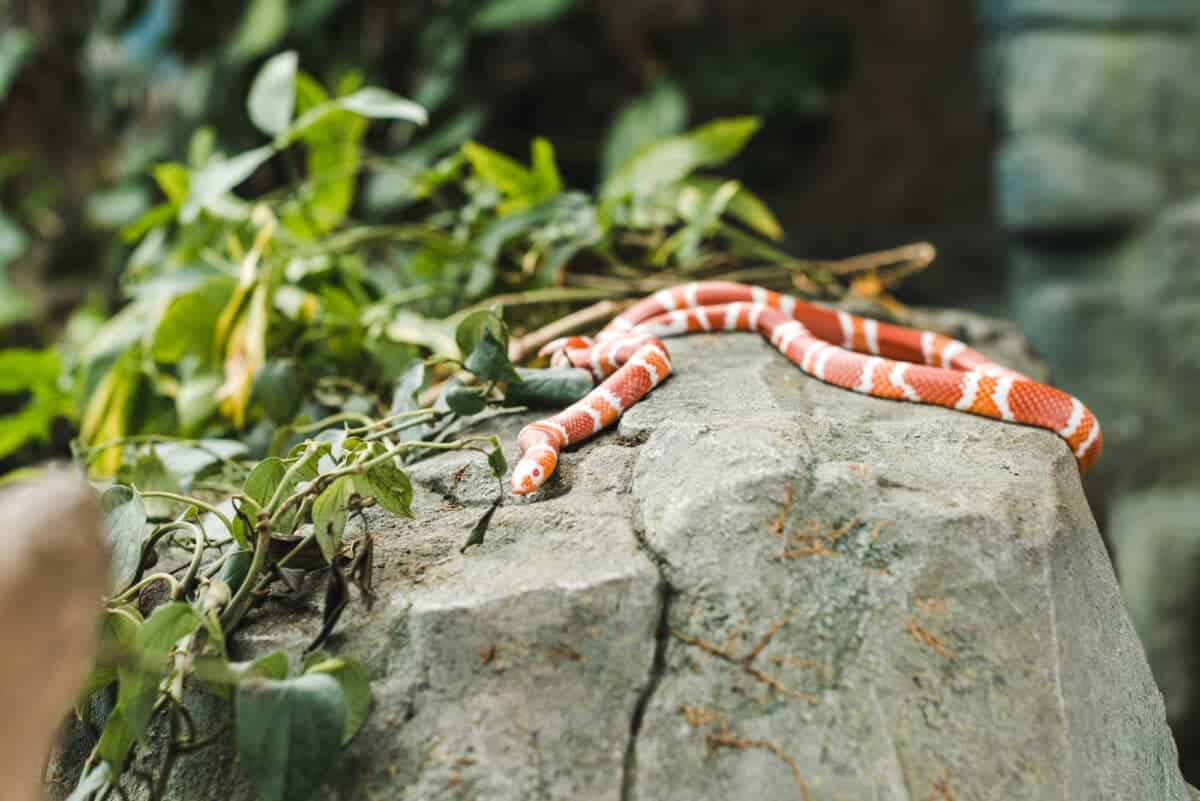
The milk Snake, known scientifically as Lampropeltis triangulum, is non-venomous in North and Central America. It has a slender body and smooth scales. Its name originates from the myth that it milks cows but preys on small mammals, birds, and reptiles. The species showcases various colors and patterns, often resembling the venomous Coral Snake, leading to mistaken identity issues.
Appearance And Coloration
The Milk Snake displays a slender physique with smooth scales and a length ranging from 2 to 4 feet. Its striking coloration is a distinguishing feature, characterized by vibrant bands or blotches in varying patterns. Colors can include red, black, yellow, and white, with bands of red or black often surrounded by white or yellow rings.
Check out: “Worst Nightmare” 3-foot Long Snake Found In Arizona Toilet.
Geographic Distribution
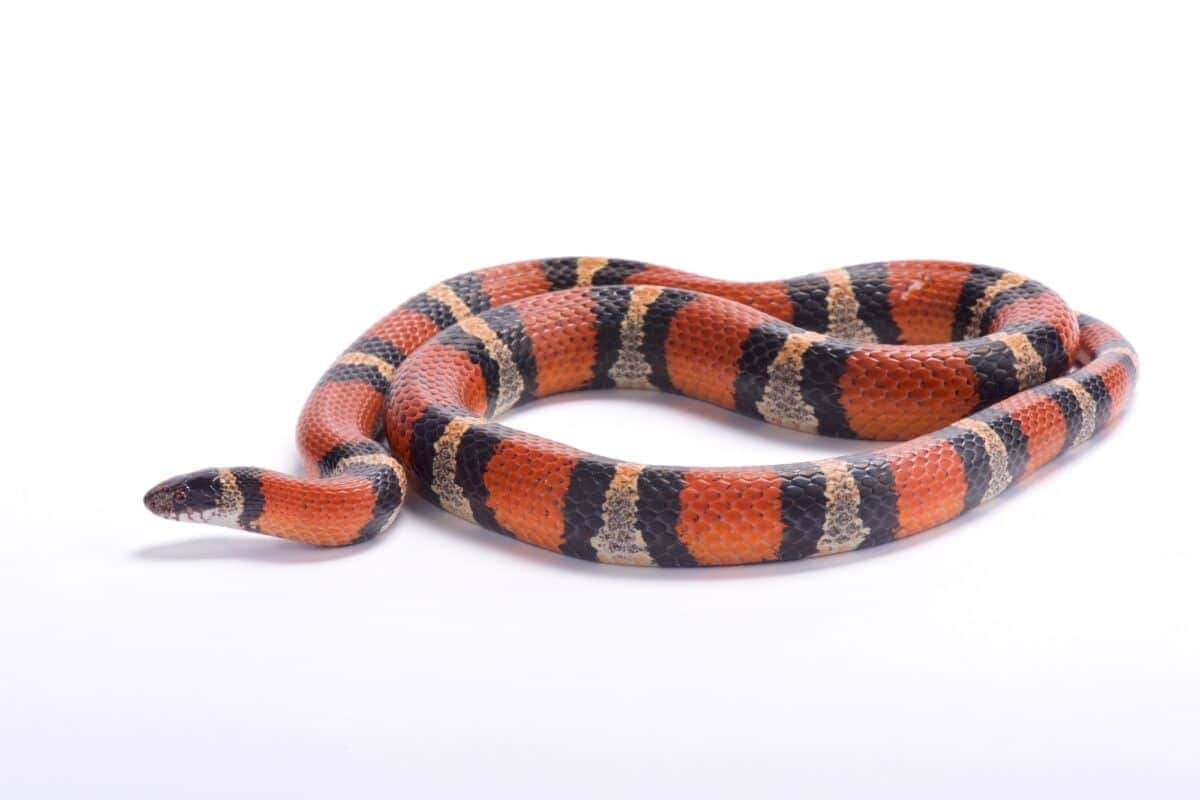
Milk Snakes inhabit a vast range across North and Central America, extending from the southeastern regions of Canada down to Ecuador and Colombia in South America. They are commonly found in grasslands, forests, farmlands, and rocky terrains. Their adaptability to various environments has contributed to their wide distribution.
Check out: Top 10 Fluffy Animals.
Feeding Habits And Diet
Milk Snakes are opportunistic hunters and have a diverse diet. They primarily prey on small mammals, such as mice, voles, and rats. Additionally, they consume birds, eggs, and occasionally other reptiles, including smaller snake species. With their smooth and agile bodies, they can sneak into rodent burrows or climb trees to hunt for birds and their eggs.
Natural Predators And Defense Mechanisms
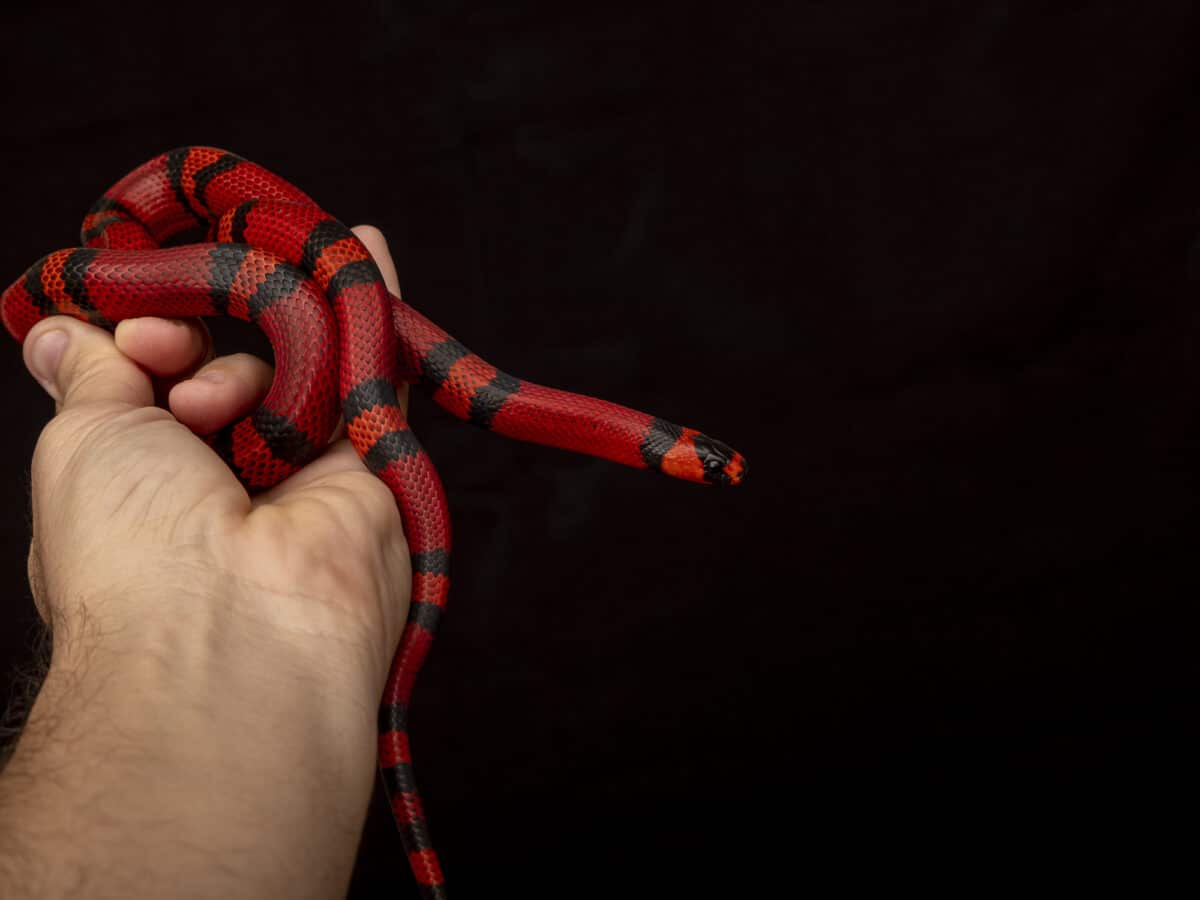
As non-venomous snakes, Milk Snakes utilize various defense mechanisms to protect themselves from predators. When threatened, they may vibrate their tail, mimicking a rattlesnake’s warning sound. They also emit a foul-smelling musk to deter potential threats. Their colorful appearance, similar to the venomous Coral Snake, is mimicry, discouraging predators from attacking.
Non-Venomous Advantage
The Milk Snakes’ non-venomous advantage lies in its remarkable mimicry of the highly venomous Coral Snake. With vibrant bands of red, black, and yellow, it closely resembles the dangerous Coral Snake’s coloration, a classic example of Batesian mimicry. This deceptive similarity helps the Milk Snake avoid predation, as potential predators often mistake it for the evil counterpart and avoid attacking. This advantageous mimicry enhances the snake’s chances of survival in the wild, making it a fascinating example of nature’s evolutionary strategies.
Unveiling The Spitting Cobra
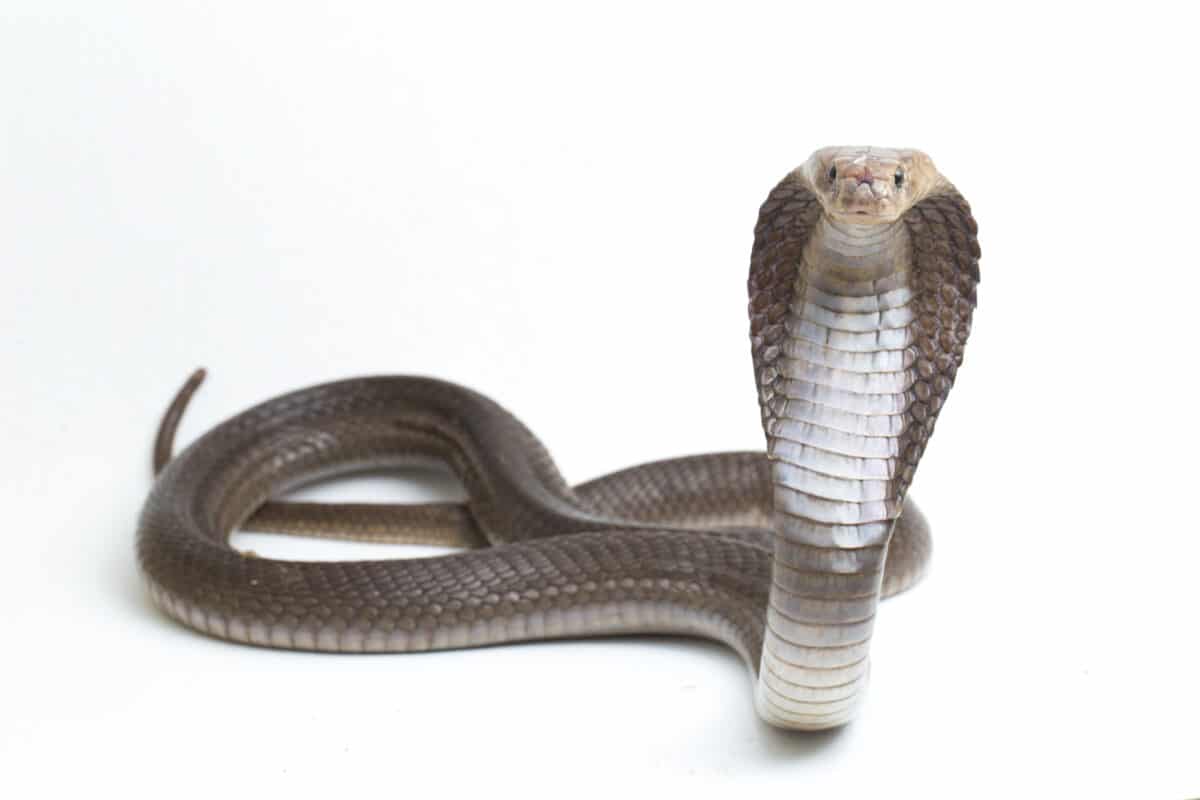
The spitting cobra is a venomous snake in many parts of Africa and Asia. Its unique defense mechanism involves expelling venom from its fangs, which can cause blindness and severe pain if it touches the eyes or skin.
Appearance And Coloration
The Spitting Cobra, scientifically known as Naja Nigricollis, boasts a distinctive physical appearance. It typically measures around 1.2 to 1.5 meters long, with a slender body and a flattened neck hood when threatened. Its coloration varies, but it often features dark shades of brown, black, or olive, adorned with lighter markings. A unique adaptation in its venom delivery system allows it to eject venom accurately through specialized fangs, targeting the eyes of potential threats or prey.
Geographic Distribution
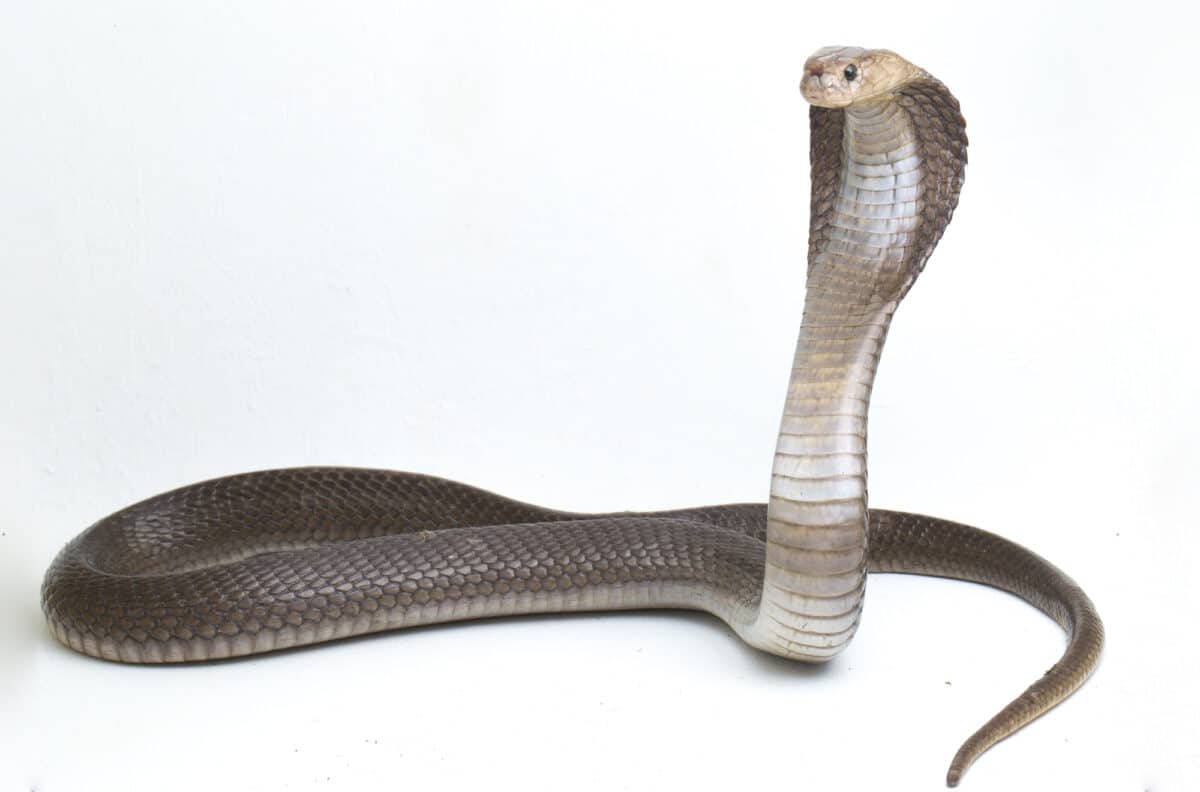
Native Habitats and Global Range
The Spitting Cobra is primarily found in Sub-Saharan Africa, inhabiting various environments, from savannas and grasslands to forests and shrublands. Its adaptability enables it to thrive in diverse habitats across Kenya, Nigeria, South Africa, and Tanzania. Despite its regional prominence, its distribution is limited to the African continent, making it an important and fascinating part of the region’s biodiversity.
Feeding Habits And Diet
The spitting cobra feeds primarily on small mammals, birds, and reptiles but will also eat insects and amphibians. They rely on their venom to incapacitate their prey, swallowing them whole. Interestingly, the spitting cobra can also spit venom at its attackers, irritating the eyes and skin. This behavior is a defensive mechanism to deter predators and protect the snake.
Natural Predators And Defense Mechanisms
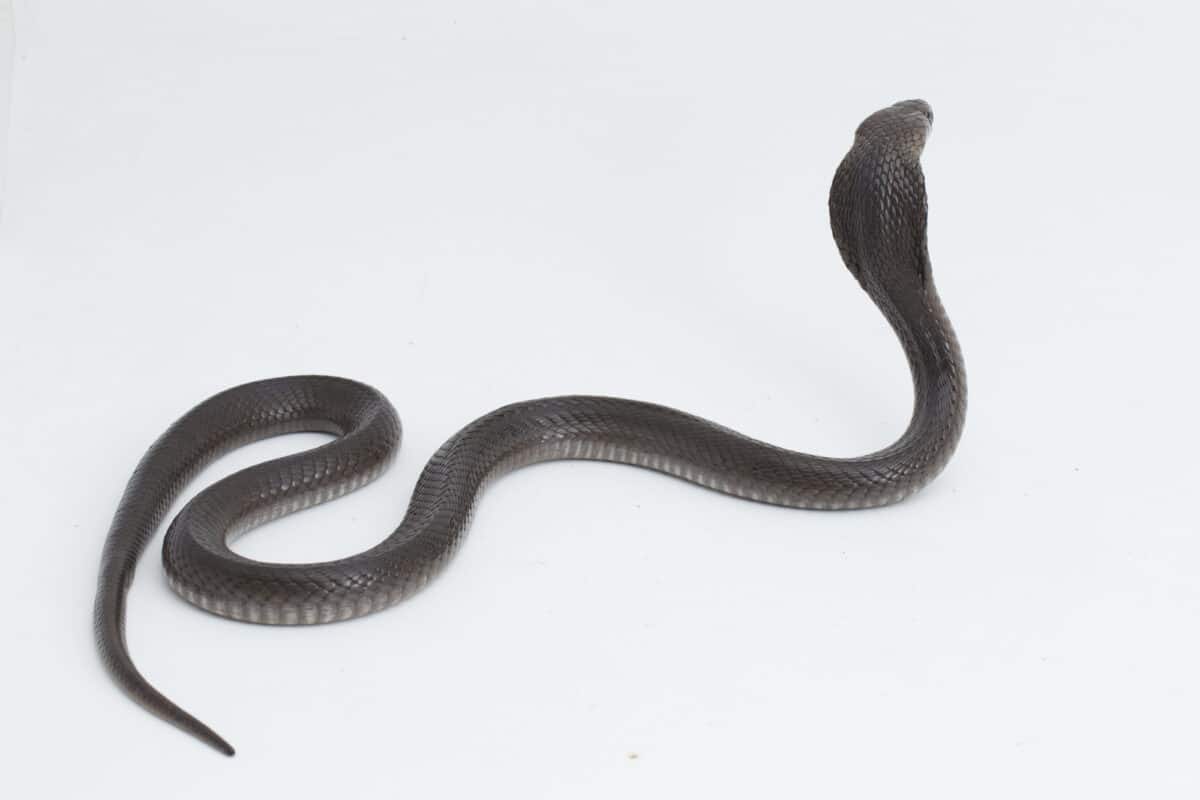
This venomous serpent is an expert hunter, relying on its keen eyesight and sense of smell to locate prey. The Spitting Cobra primarily preys on small vertebrates, including rodents, birds, and amphibians. Its venom is highly potent and can be projected accurately over a considerable distance—up to 2 meters—when threatened or when it seeks to incapacitate prey. The venom causes intense pain, blindness, and, in some cases, permanent damage to the eyes.
Venom And Its Impact
A nasty encounter, such as with the Spitting Cobra, can profoundly impact its victims. The potent venom, delivered through specialized fangs, induces excruciating pain and triggers severe physiological reactions. The toxins can cause tissue damage, paralysis, and death in the worst scenarios.
Swift medical intervention and timely antivenom administration are essential to counteract the life-threatening effects of such encounters. Understanding the dangers posed by venomous creatures is vital in fostering awareness and promoting measures for both prevention and effective treatment.
Reproduction And Parenting Strategies
Milk Snake
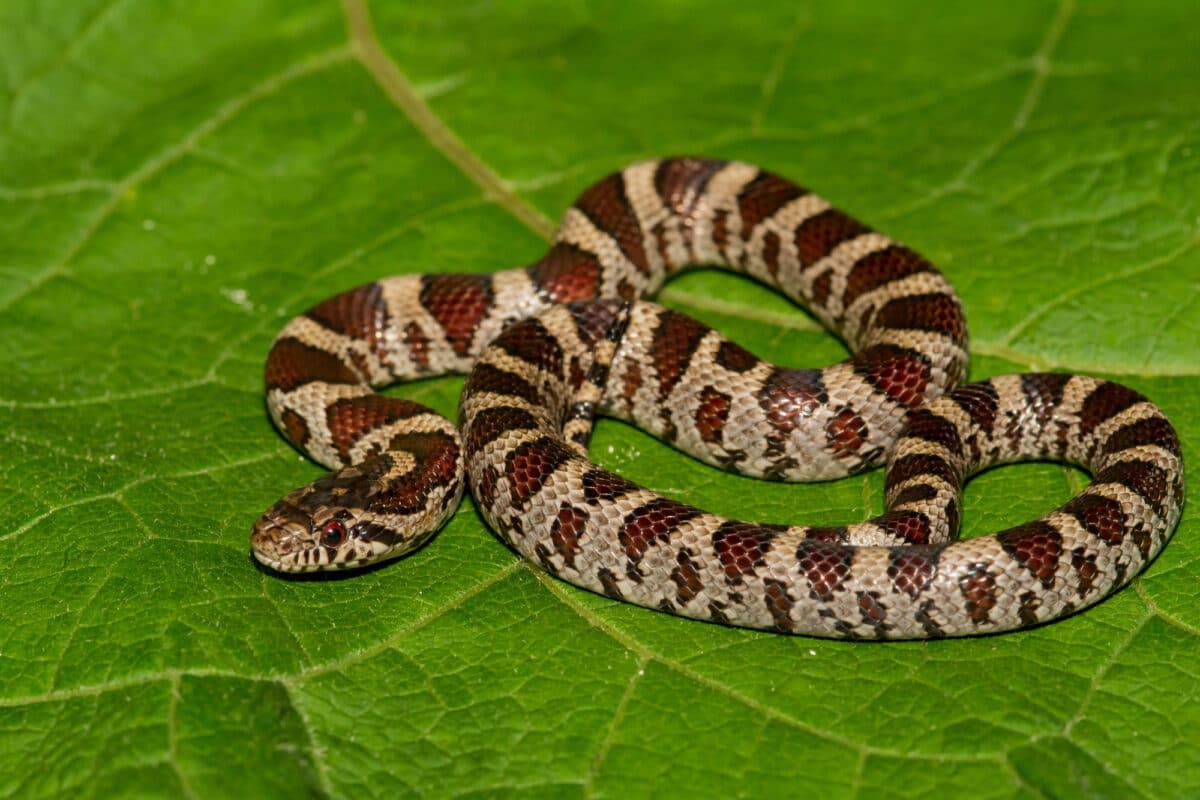
The Milk Snake follows a reproductive pattern typical of most snakes. During the mating season, males compete for females through ritual combat or other forms of competition. Once a successful mating occurs, the female lays a clutch of eggs in a secluded and safe location, such as under rocks or in decaying vegetation. Unlike some other snake species, Milk Snakes do not exhibit parental care. After laying the eggs, the female leaves them to develop and hatch independently without further involvement in their offspring’s upbringing.
Spitting Cobra

Spitting Cobras also reproduce by laying eggs and engaging in courtship rituals like the Milk Snake. After successful mating, the female deposits her eggs in a concealed spot, providing some protection from predators. However, unlike the Milk Snake, the Spitting Cobra exhibits a form of parental care.
The female remains close to the clutch, guarding and incubating the eggs to some extent. This behavior ensures a more favorable environment for the developing embryos, increasing their chances of survival until they hatch. Once the eggs hatch, the offspring can fend for themselves without further parental involvement.
Human Perceptions And Conservation Concerns
Human perceptions shape attitudes toward wildlife, including snakes like the Milk Snake and the Spitting Cobra. Both species often evoke contrasting emotions in people. While some admire their beauty and fascinating behaviors, others fear them due to their evil nature.
Conservation concerns arise from various factors, including habitat loss, illegal wildlife trade, and negative human interactions.
Misunderstandings and fear-driven actions often lead to unnecessary killings of snakes, including non-venomous ones like the Milk Snake. It can disrupt ecological balance and harm ecosystems.
For the Spitting Cobra, human encroachment into their habitats and direct persecution due to their evil capabilities threaten their survival. Raising awareness about their ecological importance and implementing conservation measures are vital to protect both species and promote coexistence.
Frequently Asked Questions
No, Milk Snakes are non-venomous and pose no direct threat to humans. They are harmless and beneficial to the environment, as they help control rodent populations.
Yes, the venom of a Spitting Cobra can cause temporary or even permanent blindness if it comes into contact with the eyes. The venom’s potent toxins target the sensitive tissues, leading to intense pain, swelling, and, in severe cases, permanent damage to vision.
Milk snakes are easily recognizable by their colorful and distinct banding patterns. They have light-colored banding around their bodies that are yellow, white, or beige, with dark-colored banding in between. Their heads are triangular, and their eyes are large, round, and black.
Key Points
| The milk Snake, known scientifically as Lampropeltis triangulum, is non-venomous in North and Central America. |
| Milk Snakes inhabit a vast range across North and Central America, extending from the southeastern regions of Canada down to Ecuador and Colombia in South America. |
| Conservation concerns arise from various factors, including habitat loss, illegal wildlife trade, and negative human interactions. |
| Spitting Cobras also reproduce by laying eggs and engaging in courtship rituals like the Milk Snake. After successful mating, the female deposits her eggs in a concealed spot, providing some protection from predators. |
| With vibrant bands of red, black, and yellow, it closely resembles the dangerous Coral Snake’s coloration, a classic example of Batesian mimicry. |
Wrap Up

Milk Snakes and Spitting Cobras are fascinating and distinct species with unique traits and characteristics. While the milk snake is a docile creature that may resemble venomous species, its harmless nature makes it a popular pet among snake enthusiasts.
On the other hand, the spitting cobra has powerful venom and a specialized defense mechanism to protect itself from predators. Both species play a valuable role in their respective ecosystems and illustrate the beauty and diversity of the animal kingdom.
Thanks for following along! For more, see our related article links below.
Next up:
- King Snake vs. Death Adder
- Woman Survives Dingo Mauling During A Jog
- The World’s Largest Bernese Mountain Dog
- Birman Cat
- Apple Head Chihuahua
Join our Forum for free today!

- Huge Pet Bison Breaks Into House - July 22, 2024
- Giant Black Bear Surprises Beachgoers by Emerging from the Ocean in Florida - July 22, 2024
- Brave Man Plays Instrument While Huge Bear Caresses His Shoulder - July 22, 2024

